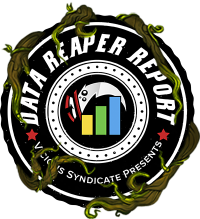
Welcome back to the Wild vS Data Reaper Report! We’re the experts from r/WildHearthstone, and we have partnered with Vicious Syndicate to create the Wild Data Reaper Report. We will be contributing the write-ups and analysis for the report, backed up by the statistics that Vicious Syndicate has become famous for. The data presented in this article is based on 50,000 games.
We’re excited for this report, the first for the Rise of Shadows expansion. At a cursory glance, this expansion seems to have made much more of an impact than the previous expansion, with a few new archetypes popping up and many older archetypes rising in the ranks. Previous meta decks got some new toys as well, leading to a fresh feeling for our Wild meta.
In order to ensure that we can provide updated reports as quickly as possible, we encourage you to register to contribute your data to the Vicious Syndicate project in order to compile more comprehensive reports! Signing up is quick and easy and your contributions are extremely important and much appreciated!
Quick Links
Class/Archetype Distribution | Matchup Winrates | vS Power Rankings | Meta Score | Class Analysis & Decklists | How to Contribute | Credits
Class/Archetype Distribution
[TABS_PRO id=20749]
Priest is the most popular class at most levels of play and drops to second at Legend. The class remains synonymous with Big Priest as a large percentage of the class’ representation can be attributed to this archetype. Other Priest archetypes exhibit lower play rates, with Reno Priest, Wall Priest, Inner-Fire and Mind-Blast Dragon Priest being the most noticeable.
Warlock is the most diverse class in the meta and the most popular class at legend. The new archetype, Darkest Hour Warlock, is the most popular Warlock deck at higher levels of play. Reno Warlock and Mecha’thun Warlock have stuck around despite not getting many new tools. Even Warlock, Cube Warlock, and Zoo Warlock make up the rest of Warlock’s representation.
Druid has seen a massive resurgence in play in the new Hearthstone year and grows in popularity as you climb the ranks. It is the 3rd most popular class at legend. Jade Druid has grown in prevalence thanks to some neutral tools that can be utilized in the archetype as well as what might be a more favorable meta. Aggro Druid has also seen a spike in play, bringing the deck back from the dead. Miracle Druid remains at a low play rate, but it has not taken off after being introduced last expansion.
Rogue has fallen off a bit in popularity as the meta seems to have adjusted to Kingsbane Rogue, with several unfavorable matchups rising in play. Behind Kingsbane Rogue, we can see Mill Rogue and Odd Rogue making up a smaller percentage of the class’ play rate.
Shaman is no longer defined by Genn Greymane, with the newly empowered Murloc Shaman seeing a significant increase in play to rival Even Shaman. Shudderwock Shaman has also seen a bit of a renaissance as players have been revisiting the archetype.
Odd Paladin is one of the most popular decks in the game, but Paladin seems to be homogenizing. Aggro and Anyfin Paladin have significantly declined, mostly leaving the class to one dominant deck.
Mage has significantly diversified. Miracle Mage has entered the scene and displays a similar play rate to the other quest deck, Exodia Mage. Aluneth Mage has drastically dropped in play rate in the new expansion, while Reno Mage continues to be played by a loyal and small base of the population.
Warrior and Hunter are back to the cellar of the Wild meta, with both seeing a large drop in play. Mech Hunter is the only noticeable archetype for the class once you hit rank 4. Pirate Warrior is the flagbearer for Garrosh, followed by Odd Warrior.
[TABS_PRO id=20750]

[TABS_PRO id=20751]
vS Meta Score
[TABS_PRO id=20752]
New expansion, same best deck? Odd Paladin remains at the top of the Power Rankings. This is unsurprising as the deck got even more powerful with the new secret, Never Surrender. It has helped Odd Paladin become extremely resilient to board clears, such as Defile, that were common answers to the deck. Only the Druid class, Even Shaman and perhaps Even Warlock are capable of consistently beating Odd Paladin. Its matchups against the rest of the field look extremely dominant.
Odd Rogue and Even Shaman complete a top 3 of Baku and Genn decks at all levels of play, showing us that while these build-around legendary minions no longer terrorize Standard, they remain format-defining in Wild. Odd Rogue’s performance might come as a surprise considering the deck has been relatively neglected compared to Kingsbane Rogue, but it stands a much better chance against Paladins.
Aggro Druid might be the most impressive newcomer, sitting at Tier 1 at all levels of play. Its surge to the top can be attributed to its favorable matchups against Odd Paladin, Big Priest, and Kingsbane Rogue. But it has great matchups all around with just a few counters. Its ability to quickly flood the board makes it very difficult for opponents to find a response early enough.
Murloc Shaman is another promising newcomer with a pretty good matchup spread and a strong win rate. But we will note that its three worst matchups happen to be the top 3 decks in the meta, which can effectively nullify its early board development. This makes Murloc Shaman a weaker deck on the climb to legend from rank 4, where Odd Paladin and Even Shaman are extremely popular.
Kingsbane Rogue rounds out Tier 1 at most levels of play, showing that this deck is still capable of performing well even when the meta is tuned against it. Odd Paladin’s popularity is keeping it from the very top. Anyone familiar with the format knows about the potency of Kingsbane Rogue in slow matchups, which establishes it as one of the most popular decks in Wild.
While Big Priest is the most popular deck in the format, the meta is very aggressive, giving it very little breathing room and keeping it in check at Tier 2. Pirate Warrior is another Tier 2 performer at higher level of play and seems to be the only relevant Warrior deck. Aluneth Mage has fallen to Tier 2 compared to the last expansion, due to poor matchups against most of the popular board-centric aggressive decks in the meta. Even Warlock and Jade Druid round out Tier 2 and would be a lot more powerful if Big Priest wasn’t the most popular deck in the game. This one particularly oppressive matchup is their biggest downfall.
Tier 3 might as well be called Tier Warlock. Darkest Hour, Cube, Mecha’Thun and Zoo Warlock all settle down here. They are joined by Mech Hunter and the new Miracle Mage. Darkest Hour Warlock is one of the strangest performers we’ve seen. Despite sitting at Tier 3, it has no bad matchups! To simplify the phenomenon, it’s a deck that essentially forces a 49-51 coin flip against many opponents due to the nature of its game plan. The other Warlock decks mostly struggle to deal with Big Priest and Kingsbane Rogue.
Tier 4 is the home of very situational decks and decks that people love to play yet aren’t very good. Aggro Paladin gets to run Shielded Minibot and Call to Arms but tends to get outpaced by the many board-centric aggressive decks that just do it better. Exodia Mage and Mill Rogue can be very powerful in specific matchups but the spreads against the entire meta are weak so climb with them if you dare. Reno Warlock and Shudderwock Shaman are fan favorites with Reno Warlock continuing to see large play rates despite not being able to deal with the waves of threats very effectively. Shudderwock is on the opposite end of the spectrum with a resurgence in play thanks to some new takes on the deck, but whether it still needs refining or just isn’t very good is a story that has yet to be told.
Class Analysis & Decklists
Druid | Hunter | Mage | Paladin | Priest | Rogue | Shaman | Warlock | Warrior
It’s been an interesting couple of months for Druid; after struggling to get traction before Rise of Shadows, it is bouncing back up the ranks thanks to some new additions to its old archetypes. A key observation is that the higher we go up the ladder rankings, the more players are playing Druid, with it being the third most popular class at Legend. This positive trend amongst top players supports the notion that Druid is a strong choice in this meta.
Jade Druid is the most popular Druid deck. The latest lists are all capitalizing on the introduction of Archmage Vargoth and his interaction with Oaken Summons. Vargoth has synergy with nearly all Druid spells and has been very important in this aggressive meta. Hijodaikan held #1 Legend on EU with his Jade Druid build through most of April, and used it on his climb during May. The biggest problem that keeps Jade Druid in Tier 2 is the sheer number of Big Priests, which dominate Druid’s limited removal. Poison Seeds is the strongest tool available to the class in order to deal with a wave of big threats, but it is more effective against Darkest Hour Warlock than it is against Big Priest.
Out of nowhere, Aggro Druid has stormed onto the meta as a top tier deck. Having a favorable matchup against the 3 most popular decks in the format in Big Priest, Odd Paladin and Kingsbane Rogue is a great place to start. Most lists are taking advantage of the new RoS cards: Acornbearer, Dreamway Guardians, and Blessing of the Ancients. Blessing of the Ancients gives the deck so much consistency in buff effects that it’s nearly impossible to leave up a Druid board without being punished. Ma3ud frequently took #1 legend by running Branching Paths at the expense of Jeeves, which used to be a staple in all Aggro Druid lists. Branching Paths is an interesting source of card draw. It’s superior to Jeeves in aggressive matchups and provides us with more Savage Roars to finish the game in slow matchups.
Hunter has fallen off the radar in the Wild format, dropping to under 4% of the total opponents at legend. Mech Hunter is the most popular deck for the class. It has a hyper-aggressive game plan that focuses on snowballing the early turns with mech discounts. Therefore, Mech Hunter’s weak matchups are decks that can effectively deal with their early game board development. Odd Paladin, Even Shaman, Druids and most Warlock archetypes have that capability.
While Midrange Beast Hunter isn’t very popular compared to last expansion, we can see that the deck performs quite well and estimate that it belongs in Tier 2. Spell Hunter and Secret Hunter have almost completely disappeared. There has been experimentation with variants of these decks that haven’t caught on in the general meta. We’ve highlighted a few of these lists from Wild Hunter aficionado, DuwinHS.
Mage has lost some of its popularity since the last expansion. Due to the power level of the other dominant decks in the meta, it can be tough for Mage to find a proper foothold to climb. Its archetypes, with the new addition of Miracle Mage, have very polarizing matchup spreads.
Miracle Mage is an interesting deck that was born from Mana Cyclone. It relies on casting multiple cheap spells, often with the use of Sorcerer’s Apprentice, and then instantly refilling the hand with Mana Cyclone. Combined with an extra turn from Open the Waygate, Flamewakers and Arcane Giants, it can dish out a significant amount of damage. As a result of the high spell-density, however, the deck can have issues with finding answers against aggressive decks. It finds most of its success against Big Priest and Kingsbane Rogue, with both decks struggling to deal with freeze effects.
Aluneth Mage uses its burn spells and secrets to dominate most Warlock archetypes, while performing well against Kingsbane Rogue and Big Priest. However, Aluneth Mage falls miserably short against faster archetypes, such as Odd Paladin and Aggro Druid, and struggles to burn out a resilient archetype in Jade Druid.
Continuing the parade of polarizing Mage archetypes, we have Exodia Mage. The combo of assembling Sorcerer Apprentices and Archmage Antonidas is time consuming. The deck struggles to survive long enough to execute its win condition. Exodia Mage preys upon the usual slower decks, while wanting to avoid most aggressive and midrange archetypes.
Reno Mage’s popularity has declined, which is why it is absent from the Power Ranking table, mostly due to generally being a weak deck. It performs reasonably well against aggressive decks but struggles to perform against mana-cheating decks. The Reno Mage build featured has found some success with an attempt to mitigate the weaknesses versus other slower archetypes using Archmage Antonidas while maintaining some semblance of favorability versus board flooding with Explosive Sheep, Wild Pyromancer, and cheap spells.
Paladin no longer presents a diverse set of popular and successful archetypes. However, the class is still highly influential and can boasts the best performing deck in the format.
Odd Paladin exhibits the highest win rate in the game, bolstered by the newly released and appropriately named Never Surrender! The card has proven to be incredibly strong, mitigating Odd Paladin’s weakness to board clears such as Swipe, Defile, Maelstrom Portal, and Spirit Lash. This has made Odd Paladin very difficult to counter. A dominant matchup over the popular Kingsbane Rogue and a strong spread overall have clearly positioned Odd Paladin to be the best choice to climb to legend with, displaying a nearly perfect Meta Score at ranks 4-1.
Aggro Paladin hasn’t enjoyed nearly the same success. The bulk of the collected data comes from decks using the new secret-synergy package. However, these attempts haven’t been too fruitful. Players have explored using both Mysterious Challenger and Bellinger Sentry, but neither has proven particularly worthwhile.
Anyfin Paladin, as well as other aggressive shells for the class, make up a very small portion of the meta. They are likely to be stronger alternative to the Secret Paladin decks, but it’s unlikely that they can match the heights of the Baku menace.
As expected, Big Priest is overwhelmingly the most popular Priest deck in Wild, at all rank brackets. New additions to the deck–including Catrina Muerte, Archmage Vargoth, and even Mass Resurrection–appear to be enticing more players than ever to try their hand at drawing Barnes on turn 4.
Despite its incredible popularity, Big Priest doesn’t seem to be performing as well as its play rate, or community perception, might suggest. The current aggressive meta exposes the well-known weakness of the archetype. But don’t celebrate just yet. It’s not the end times for Big Priest. Big Priest retains favorable matchups against Jade Druid and any Warlock deck (aside from the coin flip simulator that is Darkest Hour Warlock). The deck’s popularity is certainly meta warping, but quite inflated relative to its power level in the current Wild meta.
Reno Priest, much like other highlander decks, is struggling to gain a footing in the current Wild landscape. Even a full heal from Reno Jackson doesn’t seem to be enough to consistently stabilize against the relentless aggression common on the Wild ladder. Memnarch was able to take the featured list to top 10 Legend on the AM server late in the April season.
Another victim of the highly aggressive metagame, Mind Blast Priest appears to have declined in relative power. Prior to the latest expansion, the deck was showing promise, coming in as high as Tier 2 and touted by many high legend players as an underrated deck. However, it hasn’t gained traction since, and has dropped a full tier in our low sample estimates. Still, some players are finding success with the deck, including GetMeowth who piloted the featured list to an early legend climb in May.
- CONCERNEDMOM’S Big Priest
- Memnarch’s Reno Priest
- GetMeowth’s Mind Blast Priest
- SirFunchalot’s Wall Priest
Rogue has continued its trend towards extremely aggressive archetypes in Wild. Thanks to the addition of EVIL Miscreant, Kingsbane Rogue and Odd Rogue have built on their previous success and shown their potential for improvements.
Kingsbane Rogue mostly maintains its Tier 1 status as one of the most popular decks in the meta. Some versions of the decks have included EVIL Miscreants to help the matchups against aggressive decks, while still being powerful enough to consistently beat slower decks such as Big Priest and Warlocks.
Despite Odd Rogue’s low play rate, the stats show it has the second highest win rate at all levels of play. While the nerf to Cold Blood was seen by many as one that would kill the archetype, the deck remains extremely efficient at controlling the board in the early game. This ability leads to favorable matchups against Aggro Druid and Murloc Shaman, while still holding a strong win rate against Big Priest. It also performs better against Even Shaman and Odd Paladin than Kingsbane Rogue.
Mill Rogue remains popular at lower ranks, but this popularity comes with very little success, nestling at the bottom of Tier 4. Mill Rogue’s only notable favorable matchup comes against Big Priest.
Even Shaman’s continued success has become a mainstay of the Wild format. Achieving Tier 1 status at all rank brackets, the archetype has few poor matchups and maintains significant popularity. The deck is one of the strongest available counters to other aggressive strategies and has welcomed the rise of Aggro Druid and Murloc Shaman – greetings, friends. Although the player base has done some experimenting with the newly released Walking Fountain, Rise of Shadows hasn’t caused huge changes within the archetype, with most lists look similar to those used in the past.
Shaman did receive one of the strongest sets from the expansion, which has prompted a series of rapid developments within the class. Murloc Shaman has become one of the strongest decks in the game, fueled by the seemingly endless gas provided by Underbelly Angler. Toxfin also shored up a previous weakness of the deck, providing an efficient avenue of dealing with single large minions. Murloc Shaman acts as a stark contrast to Even Shaman, struggling against some of the faster archetypes, but excelling against the more passive Jade Druid and Big Priest. The deck shines when it can snowball the board, as each Murloc synergistically compounds on the next. Still in its infancy as an archetype, Ice Fishing and Sludge Slurper were both omitted from RenoJackson’s #2 legend list, but are powerful alternatives to some of the tech choices included.
Shudderwock Shaman’s overall win rate is quite abysmal, landing in tier 4 across all ranks. Jade and OTK builds are the most popular versions on ladder as a whole and continue to struggle. However, there is some cause for optimism. Corpsetaker Shudderwock builds have had a handful of successes at high legend and have been circulating among a small number of players. These new variant attempts to create a loop: summon multiple buffed Shudderwocks protected by Loatheb’s battlecry and add at least one back to the hand. One Shudderwock summon can be enough to end the game and the combo is often quite flexible in execution. The featured list comes from sipiwi94, who hit #1 legend and sparked initial interest in the deck.
Warlock remains extremely popular in Rise of Shadows, thanks to a new archetype revolving around Darkest Hour. Alongside Darkest Hour, Warlock is the most diverse class with six recognizable archetypes that see a fair amount of play.
Darkest Hour Warlock has made a lot of noise in the community, but it seems that its influence isn’t as widespread as people perceive it to be. The archetype revolves around the abuse of Bloodbloom with Darkest Hour alongside token generating spells for a massive board swing of close to 50/50 in stats, with potential Nerubian Unravellers to prevent AoE. The deck has a very even matchup spread with close to 50/50 matchups against everything. Darkest Warlock is by no means weak, but it doesn’t seem to be oppressive in terms of its overall win rate. What might be the source of frustration with the deck is that it has no truly bad matchups. There is no deck that can consistently beat it, since its game plan turns most matchups into coin flips that are determined by whether it was able to execute its combo before being killed, or whether the opponent had an answer to the play.
Reno Warlock is a fan favorite, but with no new powerful tools received from the recent expansion, the deck continues to meddle in Tier 4. The archetype has not shown to be a consistent anti-aggro deck and continues to struggle with Big Priest, Kingsbane Rogue and the new Darkest Hour Warlock. Until the meta drastically shifts, Reno Warlock will continue to struggle.
Mecha’Thun Warlock hasn’t really shifted in the new expansion. With poor matchups against common meta decks such as Odd Paladin, Big Priest, Kingsbane Rogue, and Darkest Hour Warlock, the deck has fallen from grace down to Tier 3.
Even Warlock has fallen a bit in Rise of Shadows. While it remains extremely powerful against board-centric aggressive decks, poor matchups against Big Priest and Kingsbane Rogue prevent it from being the top deck that it once was.
Cube Warlock is a bit too slow for the aggressive meta, as it has traditionally been an anti-control deck and control decks are not very common. It also doesn’t perform well enough against Big Priest.
Zoo Warlock has seen a significant increase in play in the new expansion thanks to a few new cards having great synergy with tools in Wild. Magic Carpet and EVIL Genius have had an impact, less so than in standard, but have nonetheless increased the power level of the deck. Finding itself in Tier 3, the deck is finally on the outskirts of competitiveness in Wild, and might get stronger with further refinement.
- Hijodaikan’s Darkest Hour Warlock
- Ksr’s Reno Warlock
- Modius’s reno Warlock
- Hijodaikan’s Mecha’Thun Warlock
- Sipiwi94’s Even Warlock
- GetMeowth’s Cube Warlock
- Hatatagami’s Heal Zoo Warlock
- Solem’s Zoo Warlock
Comparing it to Garrosh’s current state in the standard format, it’s quite surprising to see that Warrior is the least represented class in RoS in Wild. It shows that Wild has truly become its own game mode, with its own rules, and that hurts Warrior because the class hasn’t received any impactful cards for the last 2 expansions. Its best deck has also been unchanged since Knights of the Frozen Throne.
But not everything is lost for Garrosh. Pirate Warrior, the old powerhouse, has been a pretty good ladder option since MSG up until now, and despite the nerfs to two of its best cards, it’s still a powerful deck that brings results. At lower ranks, it places at Tier 1, dropping to the top of Tier 2 from rank 4, boasting a positive win rate against 3 of the most popular decks: Kingsbane Rogue, Big Priest and Murloc Shaman.
On the other hand, we have Odd Warrior, which makes it into our low sample estimates at Tier 4. The current meta is a grim challenge for those who love to Tank Up because Warrior’s most popular control deck can’t even stand a chance against the infinite or near infinite value decks such as Jade Druid and Big Priest, which laugh at your removal kit with their waves of threats. If we also consider that hyper aggressive decks, such as Kingsbane Rogue, can still snatch games off you if you whiff on your draws, it makes Odd Warrior a pretty weak ladder choice overall.
Our Data Reaper Project, including the Data Reaper Live has 4,700 active contributors. Without them, this project would not be possible, so we’d like to thank all of our contributors for their help.
Preparing our weekly article requires a significant amount of time and effort from many individuals. We would like to wholeheartedly thank our current Patreons, whose generous donations help us fund computing and server costs.
vS Gold is a new membership plan aimed to support our efforts towards improving our content and data analysis while receiving some bonuses and extra features.
Contributors
Here are all the people that participated in bringing you this edition of the [Wild] vS Data Reaper Report:
















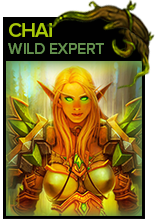
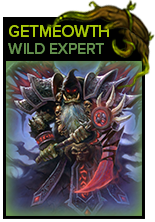
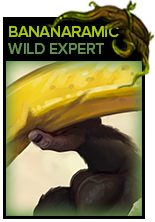
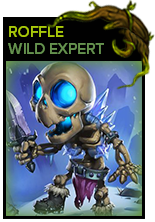
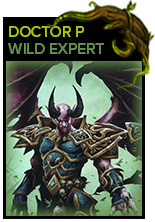
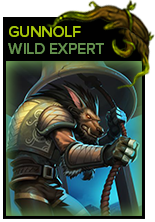
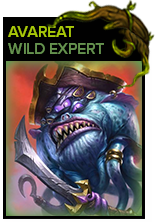
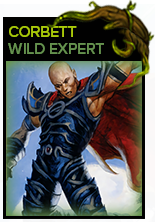
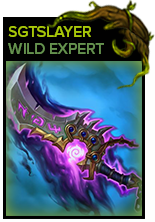



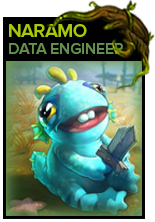

Ce pula mea ai zis despre doamna Ceterchi, al dracu plod? Vreau sa stii ca doamna Ceterchi are 300 de integrale rezolvate, adica tot atatea cate puli iti iei tu in gura cand te prind ba ratatule acum te gasesc daca stai in sectoru 6 mai bine pleaca din oras ba pui de coi
oh yes sweet mistress ceterchi this is how i like it